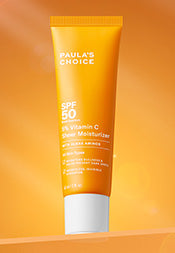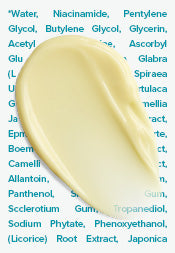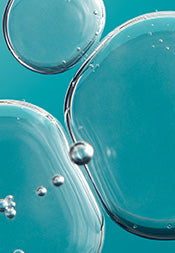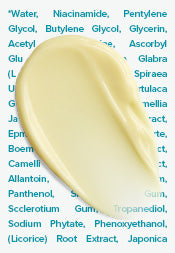Eye Creams vs Eye Gels: Which Should You Use?
Among all of the eye treatment options, the most common are eye creams and eye gels. The standard advice for selecting a cream or gel defaults to skin type, but this approach doesn’t work for eye care products. We’ll explain the differences between eye creams and eye gels and share with you why you might do well with one or the other, or, in some cases, with both.
The main difference between eye creams and gels is no surprise. It’s the texture! Eye creams tend to have a thicker and richer texture, and may have a heavy feeling on the skin. The thinner texture of eye gels feels light, refreshing, and silkier than the emollient eye creams.
Both eye creams and eye gels should contain the same type of essential anti-ageing ingredients that all skin types need to address signs of ageing around the eyes: antioxidants, skin-restoring ingredients, and skin-replenishing ingredients. The best eye creams and eye gels contain these ingredients in abundance, including eye treatments from Paula’s Choice Skincare.
Another key point: Both eye creams and eye gels can help address dark eye circles and the appearance of a crepe-like texture. They can also improve the look of puffiness, fine lines, wrinkles, and loss of firmness. Both can be applied to the under brow or eyelid area, but be careful to avoid getting the product into the eye itself. Board-certified dermatologist Dr. Debra Jaliman MD recommends “using eye care products around the eyes for anti-ageing. Choose either an eye gel or cream depending upon personal preference."
Back to choosing an eye care product based on your skin type: In general, skin types have a key role in selecting the right kind of skincare product that is suitable for you. However, in the case of eye creams and eye gels, it’s not helpful advice because as we age, the skin around our eyes tends to become drier than the skin on the rest of the face. So, even if you have oily or combination skin, your eye area is more likely to be dry. In addition, most anti-wrinkle eye creams and eye gels offer similar long-term benefits for ageing skin, so they are generally suitable for any skin type.
You should use an anti-wrinkle eye cream if you prefer a creamy texture and your eye area is much drier than the rest of your face; however, an eye gel has its place, too!
When to Use Eye Gels and Eye Creams
Eye gels are wonderful in the morning to smooth, refresh, and help diminish puffiness in the morning. The light, silky texture of most eye gels also works well under makeup. The rich eye creams can cause concealers to crease into lines and shorten the wear time of eyeliner and mascara, problems that eye gels typically don’t cause.
Eye creams are best used at night when you can apply a thick layer to soak in while you sleep. If you find you need eye cream during the day, too, the trick is to apply only a thin layer and allow it to absorb before applying sunscreen (critical for the wrinkle-prone eye area) and makeup.
How to Choose Between Eye Creams and Eye Gels
Do you need an eye cream and an eye gel in your skincare routine? This comes down to personal preference. Many people prefer the lighter, soothing feel of eye gels for daytime use and the thicker, protective feel of eye creams for the night. However, some find one type works great for both morning and evening. Experiment to find out which method works best for you!
Learn more about eye cream and other eye care products online here.
Shop our eye care products for brighter, younger-looking undereye.
References for this information:
Journal of Drugs in Dermatology, December 2021, pages 1,314–1,321
The Journal of Clinical and Aesthetic Dermatology, September 2021, pages 33–40
Journal of Cosmetic Dermatology, August 2020, pages 1,993¬1,999
Journal of Cutaneous and Aesthetic Surgery, April-June 2016, pages 65–72
Facial Plastic Surgery, August 2013, pages 273–280
Evidence-Based Complementary and Alternative Medicine, January 2013, ePublication
Hautarzt, August 2011, pages 607–613











